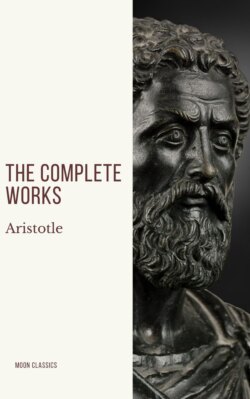Читать книгу Aristotle: The Complete Works - Aristotle - Страница 54
На сайте Литреса книга снята с продажи.
22
ОглавлениеIf one of the premisses is necessary, the other problematic, when the premisses are affirmative a problematic affirmative conclusion can always be drawn; when one proposition is affirmative, the other negative, if the affirmative is necessary a problematic negative can be inferred; but if the negative proposition is necessary both a problematic and a pure negative conclusion are possible. But a necessary negative conclusion will not be possible, any more than in the other figures. Suppose first that the premisses are affirmative, i.e. that A necessarily belongs to all C, and B may possibly belong to all C. Since then A must belong to all C, and C may belong to some B, it follows that A may (not does) belong to some B: for so it resulted in the first figure. A similar proof may be given if the proposition BC is necessary, and AC is problematic. Again suppose one proposition is affirmative, the other negative, the affirmative being necessary: i.e. suppose A may possibly belong to no C, but B necessarily belongs to all C. We shall have the first figure once more: and-since the negative premiss is problematic-it is clear that the conclusion will be problematic: for when the premisses stand thus in the first figure, the conclusion (as we found) is problematic. But if the negative premiss is necessary, the conclusion will be not only that A may possibly not belong to some B but also that it does not belong to some B. For suppose that A necessarily does not belong to C, but B may belong to all C. If the affirmative proposition BC is converted, we shall have the first figure, and the negative premiss is necessary. But when the premisses stood thus, it resulted that A might possibly not belong to some C, and that it did not belong to some C; consequently here it follows that A does not belong to some B. But when the minor premiss is negative, if it is problematic we shall have a syllogism by altering the premiss into its complementary affirmative, as before; but if it is necessary no syllogism can be formed. For A sometimes necessarily belongs to all B, and sometimes cannot possibly belong to any B. To illustrate the former take the terms sleep-sleeping horse-man; to illustrate the latter take the terms sleep-waking horse-man.
Similar results will obtain if one of the terms is related universally to the middle, the other in part. If both premisses are affirmative, the conclusion will be problematic, not pure; and also when one premiss is negative, the other affirmative, the latter being necessary. But when the negative premiss is necessary, the conclusion also will be a pure negative proposition; for the same kind of proof can be given whether the terms are universal or not. For the syllogisms must be made perfect by means of the first figure, so that a result which follows in the first figure follows also in the third. But when the minor premiss is negative and universal, if it is problematic a syllogism can be formed by means of conversion; but if it is necessary a syllogism is not possible. The proof will follow the same course as where the premisses are universal; and the same terms may be used.
It is clear then in this figure also when and how a syllogism can be formed, and when the conclusion is problematic, and when it is pure. It is evident also that all syllogisms in this figure are imperfect, and that they are made perfect by means of the first figure.
